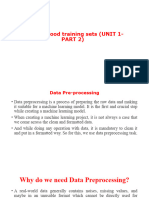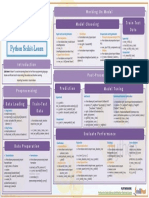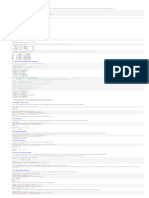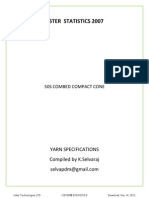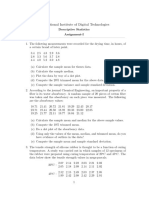0% found this document useful (0 votes)
32 views10 pagesMtech Study Material
The document provides an overview of key concepts in Python for data preprocessing, including the use of SimpleImputer for handling missing values, StandardScaler for feature scaling, and the significance of train_test_split for model evaluation. It also explains OneHotEncoding, the differences between fit(), transform(), and fit_transform() methods, and the importance of normalization and standardization in machine learning. Additionally, it emphasizes the necessity of splitting data before normalization to prevent data leakage.
Uploaded by
Shubham BandopadhyayCopyright
© © All Rights Reserved
We take content rights seriously. If you suspect this is your content, claim it here.
Available Formats
Download as PDF, TXT or read online on Scribd
0% found this document useful (0 votes)
32 views10 pagesMtech Study Material
The document provides an overview of key concepts in Python for data preprocessing, including the use of SimpleImputer for handling missing values, StandardScaler for feature scaling, and the significance of train_test_split for model evaluation. It also explains OneHotEncoding, the differences between fit(), transform(), and fit_transform() methods, and the importance of normalization and standardization in machine learning. Additionally, it emphasizes the necessity of splitting data before normalization to prevent data leakage.
Uploaded by
Shubham BandopadhyayCopyright
© © All Rights Reserved
We take content rights seriously. If you suspect this is your content, claim it here.
Available Formats
Download as PDF, TXT or read online on Scribd
/ 10



